| Home |
| Acknowledgments |
| Conventions |
| Glossary |
| Maps |
| References |
| Links |
| Articles |
| Thumbnails |
| Species
list |
| Family |
| Next
species |
Additional Photos
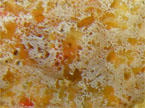
detail
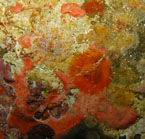
context
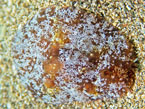
large, top
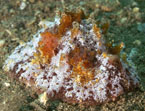
large, front

large, side
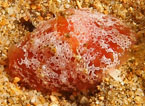
dark orange
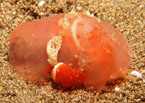
without white
Lamellaria sp. #7
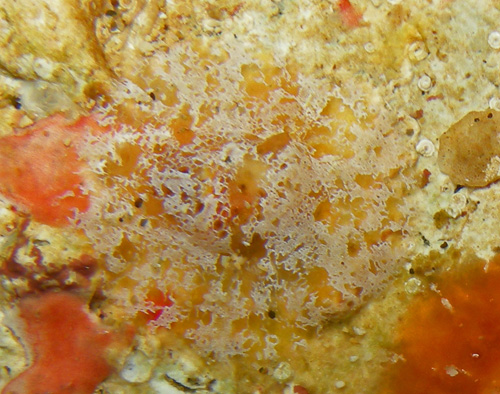
| Maximum size: about 25-30 mm. Identification: This is an orange species that's usually densely maculated with superficial white pigment. It's tubercles vary in height but the areas between the tubercles are relatively smooth. Non-white areas are minutely flecked with darker orange. It's distinguished from Lamellaria sp. #6 by its white maculation and from Lamellaria sp. #2 by the irregular nature of its white maculation as well as the dusky highlights seen in large animals. Occasional animals may lack white but still show the relatively smooth surface and minute, dark orange flecking (in non-white areas) that are seen in typical animals. Natural history: Lamellaria sp. #7 is known on Maui from six animals, two found in moderately exposed rocky habitats at 2-5 m (6-15 ft) and four found at 6-9 m. (20-30 ft) in Halimeda kanaloana beds. Keoki Stender found a similar animal at Kewalo, Oahu, at a depth of 24 m (80 ft). The first Maui animal was associated with a specimen of Lamellaria sp. #1 on an orange didemnid tunicate showing feeding damage. (Note 1) Distribution: Maui and Oahu. Taxonomic notes: There is some uncertainty in separating this species from other listed species of Lamellaria. It's unlikely to be a form of Lamellaria sp. #1 due to differences in color details and tubercles although the Kapalua animal was found in close proximity to a "normal" example of that species. It was first recorded in Hawaii from Kewalo, Oahu by Keoki Stender (as illustrated in the first three photos on the Lamellaria page on his site). Photo: CP: about 15-18 mm (estimated from photo): Kapalua Bay, Maui; April 4, 2017. Observations and comments: Note 1: The presence of the first Maui animal on a tunicate showing feeding damage might suggest that it eats that species. But, the freshly damaged edges of the tunicate are closely associated with the specimen of Lamellaria sp. #1, rather than Lamellaria sp. #7. So, the relationship remains inconclusive. |
| Thumbnails |
Species
list |
Family | Next species | Top |